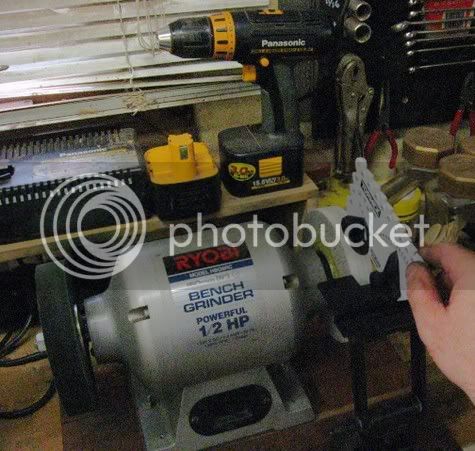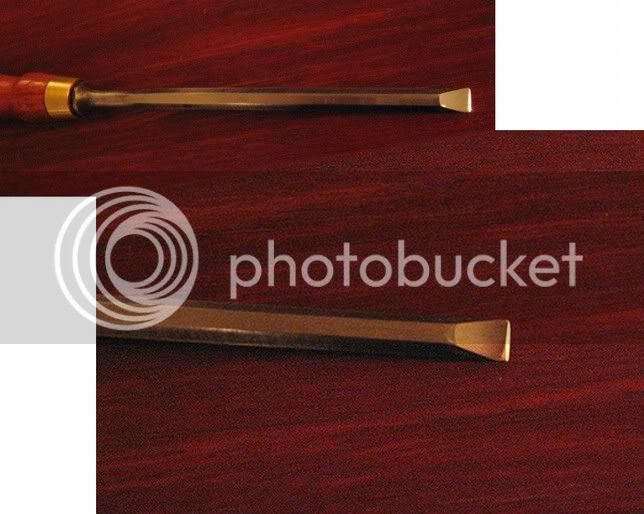Derek Cohen (Perth Oz)
Established Member
Once set up, I like to hone my chisels freehand. This involves grinding the laminated chisels (such as Japanese) with a single flat bevel and the non-laminated blades with a hollow grind. I do not want to use microbevels on chisels. The reason for this is that I strop the edges after- and between honings. It is easier to do so without dubbing the edge if the bevel can be held flat to the strop (and waterstone).
The only chisels that receive a microbevel are the OB mortice chisels.
I do use the Veritas Honing Guide Mk II when I set up a blade. This depends on the size of the bevel.
If I was grinding a Japanese chisel, such as one that had a chipped edge, I would first re-establish the bevel on a belt sander. I can take this from 80 to 600 grit (belts) before moving to the (1200 and 8000) waterstones, where I will work them freehand. The hard steel cutting edge is thin and hones quickly.
To hollow grind I use a 6" high speed grinder ... and my secret weapon in establishing an accurate bevel angle (20 degrees for paring chisels and 30 degrees for Japanese chisels) is the Tormek Angle Setter.

This enables me to freehand a hollow angle very accurately, and I can go directly to the Veritas Honing Guide (for narrow blades).
I feel comfortable freehanding this 20 degree 1/4" hollow ground paring chisel once set up.

Regards from Perth
Derek
The only chisels that receive a microbevel are the OB mortice chisels.
I do use the Veritas Honing Guide Mk II when I set up a blade. This depends on the size of the bevel.
If I was grinding a Japanese chisel, such as one that had a chipped edge, I would first re-establish the bevel on a belt sander. I can take this from 80 to 600 grit (belts) before moving to the (1200 and 8000) waterstones, where I will work them freehand. The hard steel cutting edge is thin and hones quickly.
To hollow grind I use a 6" high speed grinder ... and my secret weapon in establishing an accurate bevel angle (20 degrees for paring chisels and 30 degrees for Japanese chisels) is the Tormek Angle Setter.

This enables me to freehand a hollow angle very accurately, and I can go directly to the Veritas Honing Guide (for narrow blades).
I feel comfortable freehanding this 20 degree 1/4" hollow ground paring chisel once set up.

Regards from Perth
Derek




